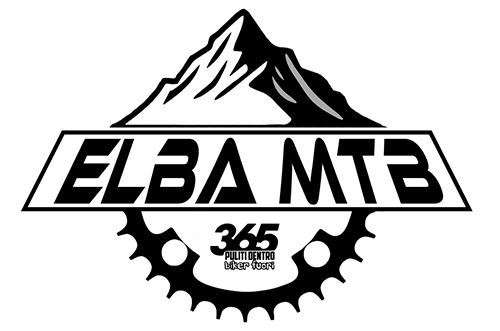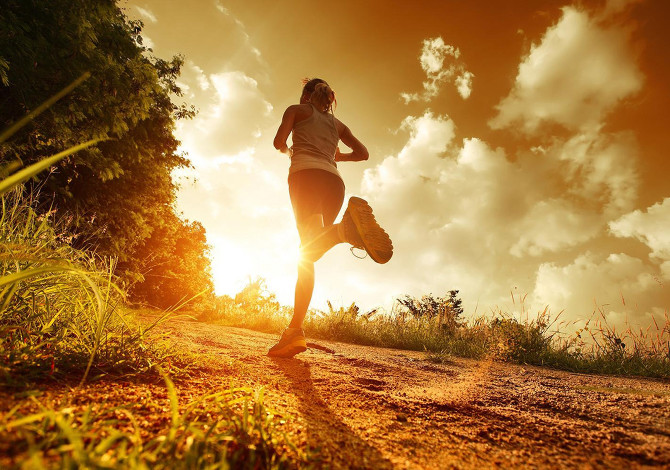There is a grain of truth in this belief; in fact, while cycling involves a closed kinetic chain movement, in which there are fixed contact points and a regular and repetitive gesture; in running the open kinetic chain movement, with muscles and joints moving in space. Two different ways of activating the body that were once considered antithetical.
In recent years things have changed; The ones who initially cleared the possibility of managing different training sessions were the triathletes, forced to alternate running and cycling, but always able to maintain high averages in both disciplines.
From my point of view, however, the real turning point has occurred in recent years. In daily practice I often recommend running, sometimes for a question of time, others because I believe that, especially in enduro, the qualities trained by a runner can also find application in the PS. But the turning point came with the news of Cameron Wurf, after closing the Paris Roubaix, he decided to run a half marathon to prepare for an iron man.


Now, the news is already sensational in itself; but it is even more so because it is difficult to run 21km without having an important training base, even more so if this happens after the terrible French cobblestones! Analyzing his social media in this way, we can see how the Ineos athlete constantly alternates cycling and running, without losing his performance ability on two wheels.
If you add the corsets to this example Roglic as a warm-up before the tour stages, then we can say that the topic is definitively cleared
The Latins would say: "cum grano salis"
I can already hear the objections like, yes but they are professionals; the pros' plans may not work for the amateurs..etc. etc.
True and false at the same time.
Indeed, it is true that the plans of the pros are impossible for the amateurs; for time, physical capabilities and staff; but at the same time, adapting some techniques borrowed from the professional world can also be useful for optimizing amateur training. In fact, we must always keep in mind that very often high-level training methods leave little room for improvisation and are the result of analyzes and studies, which take into account physiology, biomechanics and all the possibilities that the modern world of sport can offer. So taking some of this knowledge and adapting it to us mere mortals can only do good.
The benefits of running
What benefits could a gesture antithetical to cycling such as running possibly provide?
Scientific studies have shown that professional cyclists, as well as elite swimmers, suffer from lower bone density. It has been established that this phenomenon is due to the absence of external loads typical instead of running. So spending many hours in the saddle, without introducing high impact training, can be harmful to a cyclist's bones. This characteristic is more marked among road runners, but it is an element to take into consideration and which should lead to reevaluating running sessions.
What if I'm not a pro?
If for a professional running can be useful above all for bone health, for an amateur the reasons for including it can be even more.
In fact, especially in the winter period, it is more difficult to train optimally, both due to the few hours of light and the often hostile climate. Even if modern trainers, with dedicated programs, have met the needs of cyclists by managing to better simulate a bike ride, it is my opinion that creating an indoor-only training program in the medium term can be alienating. So thinking about alternating sessions in hamster mode on the rollers with running sessions could be a good solution to break the monotony. Furthermore, by identifying the most appropriate methods, it could also allow for valid training. It is possible, for example, to introduce uphill running training, where the muscular stimulation is similar to that of pedalling, you can do good resistance training, perhaps even with threshold stretches, using the descent as an opportunity for technique and dexterity, very useful for those who compete.
In addition to the physiological aspects, there are also other considerations to make when considering running sessions. The stimulation given to the plantar arch can be a valid aid for strengthening the foot and improving posture and general activation of the muscles. Furthermore, if we take disciplines such as enduro and DH, the muscular reactivity typical of the running gesture, if well exploited, can also be an added value in the riding of the MTB, in the absorption of the energies present in the leaning turns, in the management of the landings from a jump and in general in all situations in which we have to overcome gravitational forces.
How many times…
It is difficult to give a number, it depends on the training plans, the availability of time and the attitude of the individual athlete, but generally one or two weekly sessions can be a good compromise, trying to maintain one even during the competitive season, perhaps useful for combining muscle toning, reactivity and speed work, which are fundamental both for actively riding a bike and for making muscle activation more effective also for the pedaling gesture.
Road, off road or track?
We are bikers and therefore the answer might seem obvious. In fact, training on uneven surfaces has several advantages. First of all, the ground and meadows are softer and therefore the impacts become less traumatic. On these surfaces it is less important to have perfect running technique, furthermore the presence of stones and roots helps us to maintain the fundamental dexterity qualities in our sport.
The track could be a valid alternative, the surface absorbs impacts better, reducing joint trauma, you train in a protected environment and it is often possible to do so even in the evening hours. It's certainly a little more boring, but it often allows for greater socialization, which never hurts. Personally, however, I would avoid the road as much as possible for the reasons that can be extrapolated from what is written for the other two typologies.


Conclusions
The watchword is becoming multidisciplinarity. Versatile athletes, capable of moving from cyclocross campaigns to the San Remo seafront or to the roots of an XC circuit. This feature, taken to its limit in the professional world, can undoubtedly also be useful among amateurs and sports enthusiasts in general; to diversify stimuli, keep the desire to do physical activity high and improve general health. Naturally addressing the topic with reason and planning.










